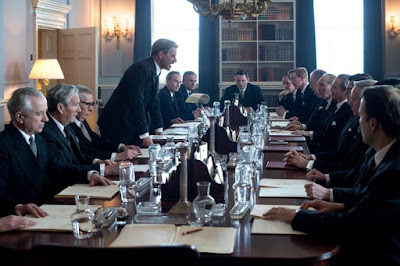 |
| Oasis #lacmaoutsidein #losangeles #publicspace |
A week ago, I was visiting my son in Los Angeles. When he headed out for an appointment one morning, I asked him to drop me off at the LA County Museum of Art.
I was looking forward to seeing the latest exhibitions so much that it didn't even occur to me that LACMA wouldn't be open yet at 9:30 in the morning.
I was momentarily disoriented when I realized I was going to be outside the gate for an hour and a half -- on the streets of Los Angeles! without a car! But then I took a deep breath . . . got my heartbeat back down . . . and started to explore.
Then a few things happened in rapid succession:
* I noticed a phenomenal "shutter" effect as I walked alongside the fence with the sun shining through -- light-dark-light-dark-light-dark.
* I took a picture and shared it with my daughter in Chicago. (When she can't come to the museum with me in person, she cheers me on virtually.) We "LOL'd" about the fact that I was so eager I came before the museum even opened.
* I decided to walk around the (extensive) perimeter of LACMA and take a bunch of pictures.
* I realized I was seeing a new side of LACMA. I was documenting my experience of being "outside looking in."
* I thought about doing an exhibition of my photographs (and video) -- on social media. I decided Instagram was the right place for it.
* I wondered if a hashtag could be used to tie together my "virtual exhibition." I decided to use #lacmaoutsidein.
In the last year I've become aware -- along with many observers of the tech scene and social media -- that Instagram has important lessons for us about how to communicate better. My #lacmaoutsidein experiment was conducted with no particular end in mind -- other than to have fun, discover something new, and perhaps make something beautiful. I did suspect that it might hold lessons for all kinds of communication, including very intentional activist efforts. And, indeed, the images and the way people interact with them in a "virtual exhibition" stimulated all kinds of unexpected thoughts for me.* I took a picture and shared it with my daughter in Chicago. (When she can't come to the museum with me in person, she cheers me on virtually.) We "LOL'd" about the fact that I was so eager I came before the museum even opened.
* I decided to walk around the (extensive) perimeter of LACMA and take a bunch of pictures.
* I realized I was seeing a new side of LACMA. I was documenting my experience of being "outside looking in."
* I thought about doing an exhibition of my photographs (and video) -- on social media. I decided Instagram was the right place for it.
* I wondered if a hashtag could be used to tie together my "virtual exhibition." I decided to use #lacmaoutsidein.
Please check out my #lacmaoutsidein "virtual exhibition" on Instagram. (And if you're really interested, you can see my "exhibition notes" on Twitter using the same hashtag!)
Meanwhile, I'm getting busy dreaming up my next project . . . .
Please share this post . . . .



